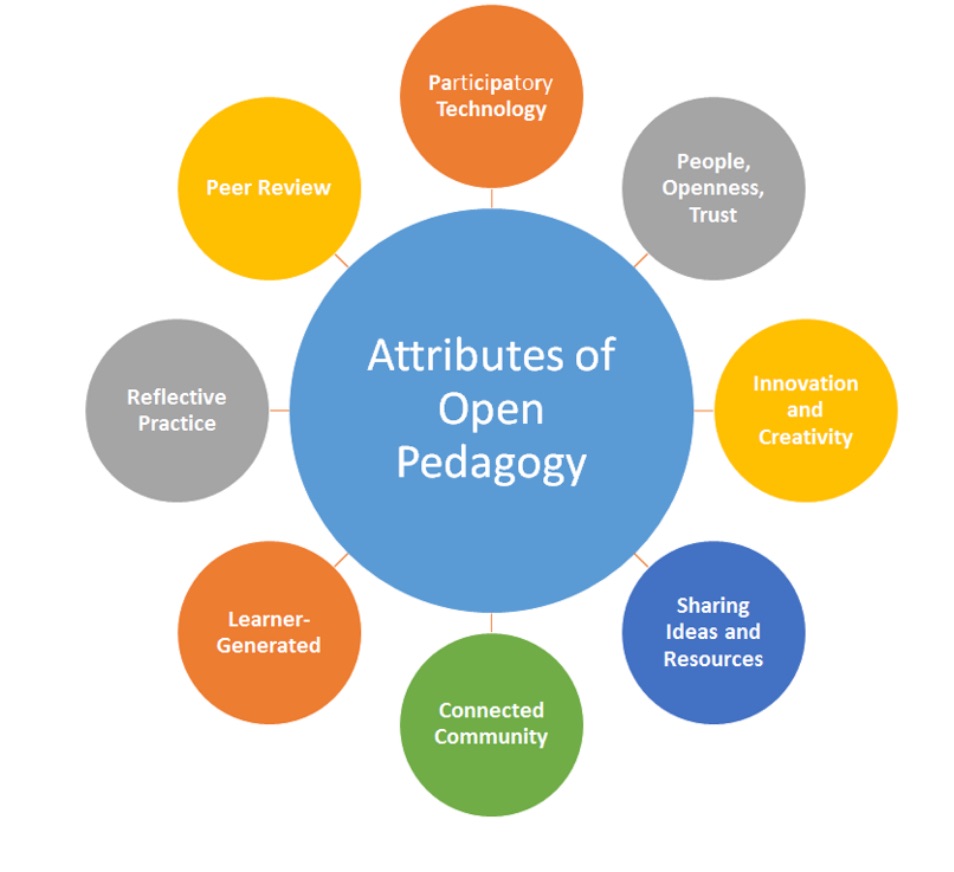
Open Pedagogy is also referred to as open educational practices (Bates, 2019). Open pedagogy consists of practices that, “support learning, or the open sharing of teaching practices with a goal of improving education and training at the institutional, professional, and individual level” (Bates, 2019).
Open pedagogy allows students to engage as creators of the information instead of simply being consumers of the information (Bates, 2019). As discussed in our learning design modules for EDCI 335, an important aspect of learning is to actually “do” what you’re studying, such as in economics courses, you do economics (James, 2021). Moreover, as stated in the module, surface and deep approaches to learning play a critical role in overall learning. As we learned in the module “surface approach is characterized by learners doing the minimum amount of work and using low-level cognitive skills (memorization, etc) when high-level cognitive skills (evaluating, assessing, critiquing) are required” (James, 2021). In contrast, a deep approach to learning is when learners use high levels of cognitive skills required for certain tasks (James, 2021).
Based on my understanding open pedagogy seems to be a deep approach to learning due to the various employed during open pedagogy practices. Open pedagogy attributes include Participatory Technology, People-Openness-Trust, Innovation, and Creativity, Sharing Ideas and Resources, Connected Community, Learner-generated, Reflective Practice, and Peer Review (Bates, 2019).
As discussed in the module, constructive alignment is necessary while assessing learning outcomes and goals. For our group, our focus was to teach third-graders about calculating perimeters. We wanted to use online resources such as Nearpod, which includes interactive videos and presentations to enhance the students’ learning experiences. Our lesson plans also require the students to have lots of group discussions which seems to include some of the attributes listed in open pedagogy. Therefore, open pedagogy seems like a helpful approach for student’s learning. However, a concern I have is that open pedagogy’s attributes seem to be at a higher level than what third graders may be capable of, such as its in-depth conceptualization and reflective approaches. Therefore, I believe that further research and analysis will provide me with a clear and better understanding to help me make the decision regarding if open pedagogy would be beneficial for our group project and the corresponding learning outcomes.
Constructive alignment exists when the goals or outcomes of a given learning experience are aligned with the method to be used to assess the learning. Although I believe that based on the structure of our interactive resource we seem to reflect constructive alignment, it seems to still be challenging to come to this conclusion as open pedagogy seems to be a challenging and advanced approach for a learning environment for third graders. Therefore, it may be beneficial for our group to find an alternative approach or further research open-pedagogy and identity if it can modify to meet approachable standards for third graders.
References:
Bates, T. (2019, September 27). Chapter 11.4 Open pedagogy | Tony Bates. Tony Bates |. https://www.tonybates.ca/2019/09/26/chapter-11-4-open-pedagogy/
James, H. (2021, May 5). Constructive Alignment – EDCI 335. ED Tech Uvic- 335. https://edtechuvic.ca/edci335/constructive-alignment/